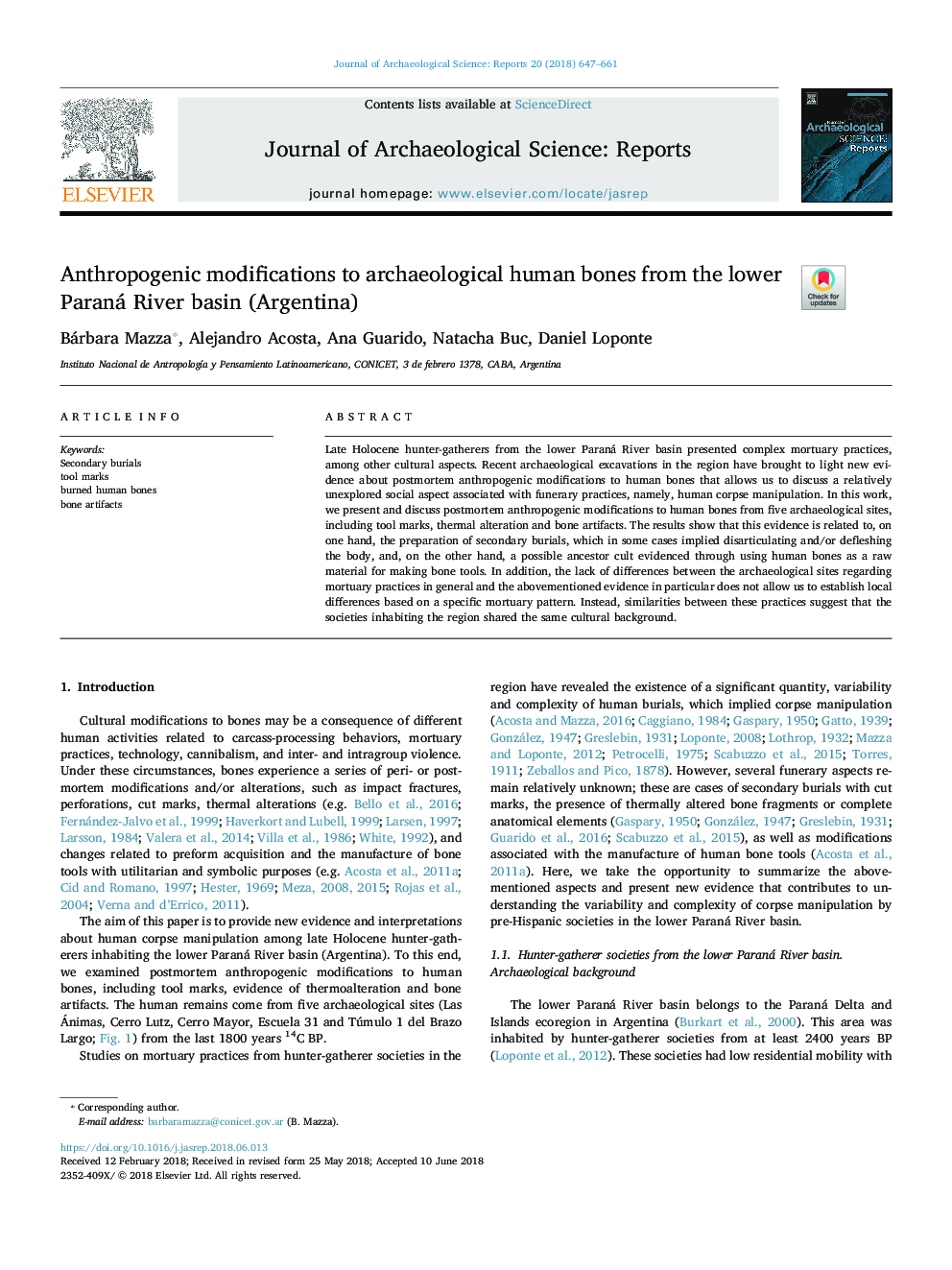| Article ID | Journal | Published Year | Pages | File Type |
|---|---|---|---|---|
| 7444597 | Journal of Archaeological Science: Reports | 2018 | 15 Pages |
Abstract
Late Holocene hunter-gatherers from the lower Paraná River basin presented complex mortuary practices, among other cultural aspects. Recent archaeological excavations in the region have brought to light new evidence about postmortem anthropogenic modifications to human bones that allows us to discuss a relatively unexplored social aspect associated with funerary practices, namely, human corpse manipulation. In this work, we present and discuss postmortem anthropogenic modifications to human bones from five archaeological sites, including tool marks, thermal alteration and bone artifacts. The results show that this evidence is related to, on one hand, the preparation of secondary burials, which in some cases implied disarticulating and/or defleshing the body, and, on the other hand, a possible ancestor cult evidenced through using human bones as a raw material for making bone tools. In addition, the lack of differences between the archaeological sites regarding mortuary practices in general and the abovementioned evidence in particular does not allow us to establish local differences based on a specific mortuary pattern. Instead, similarities between these practices suggest that the societies inhabiting the region shared the same cultural background.
Keywords
Related Topics
Social Sciences and Humanities
Arts and Humanities
History
Authors
Bárbara Mazza, Alejandro Acosta, Ana Guarido, Natacha Buc, Daniel Loponte,
